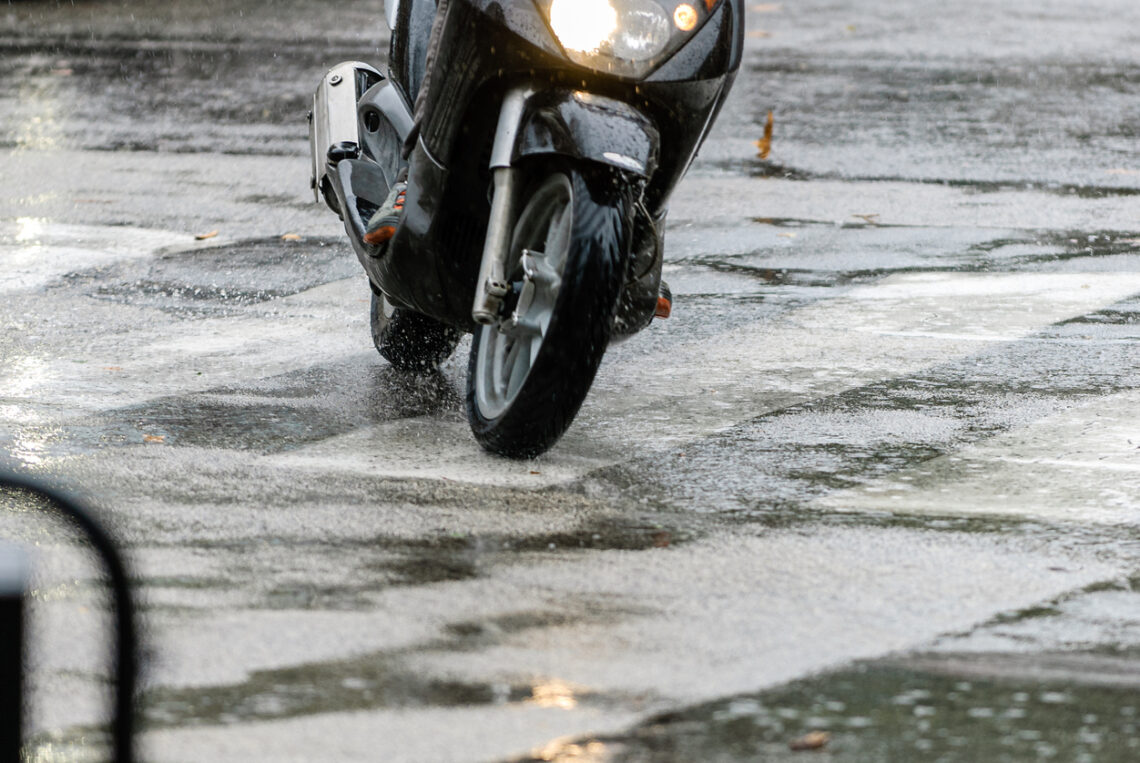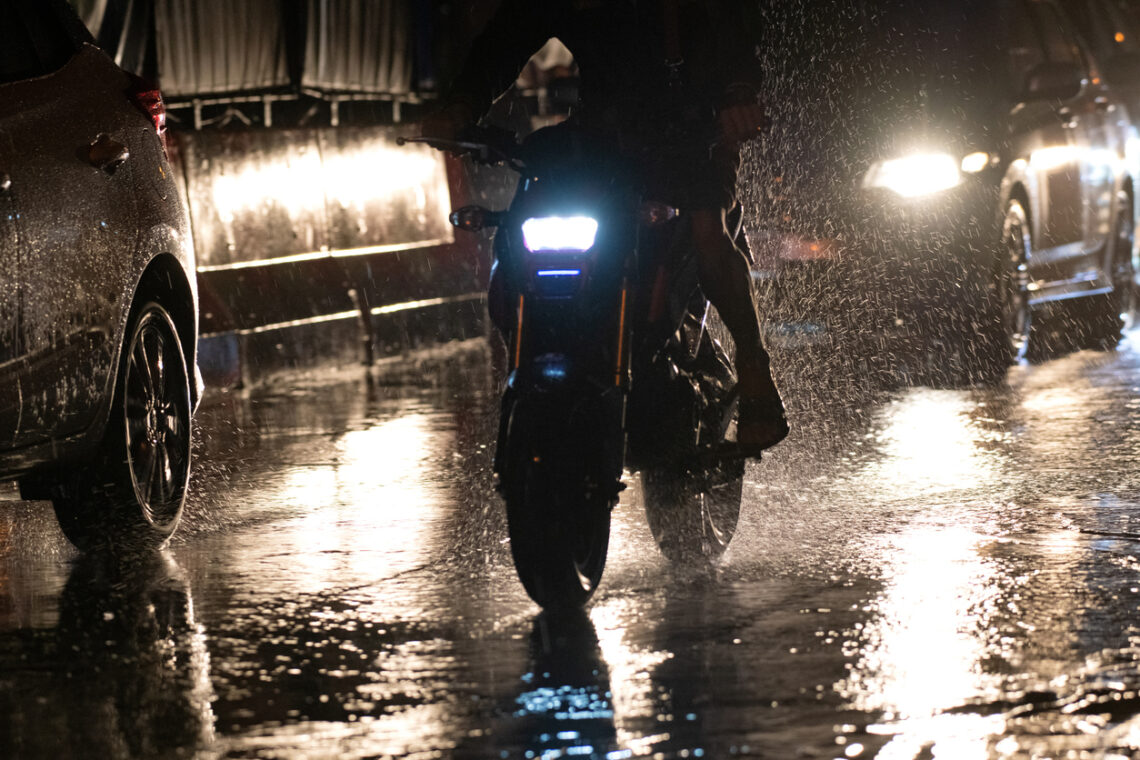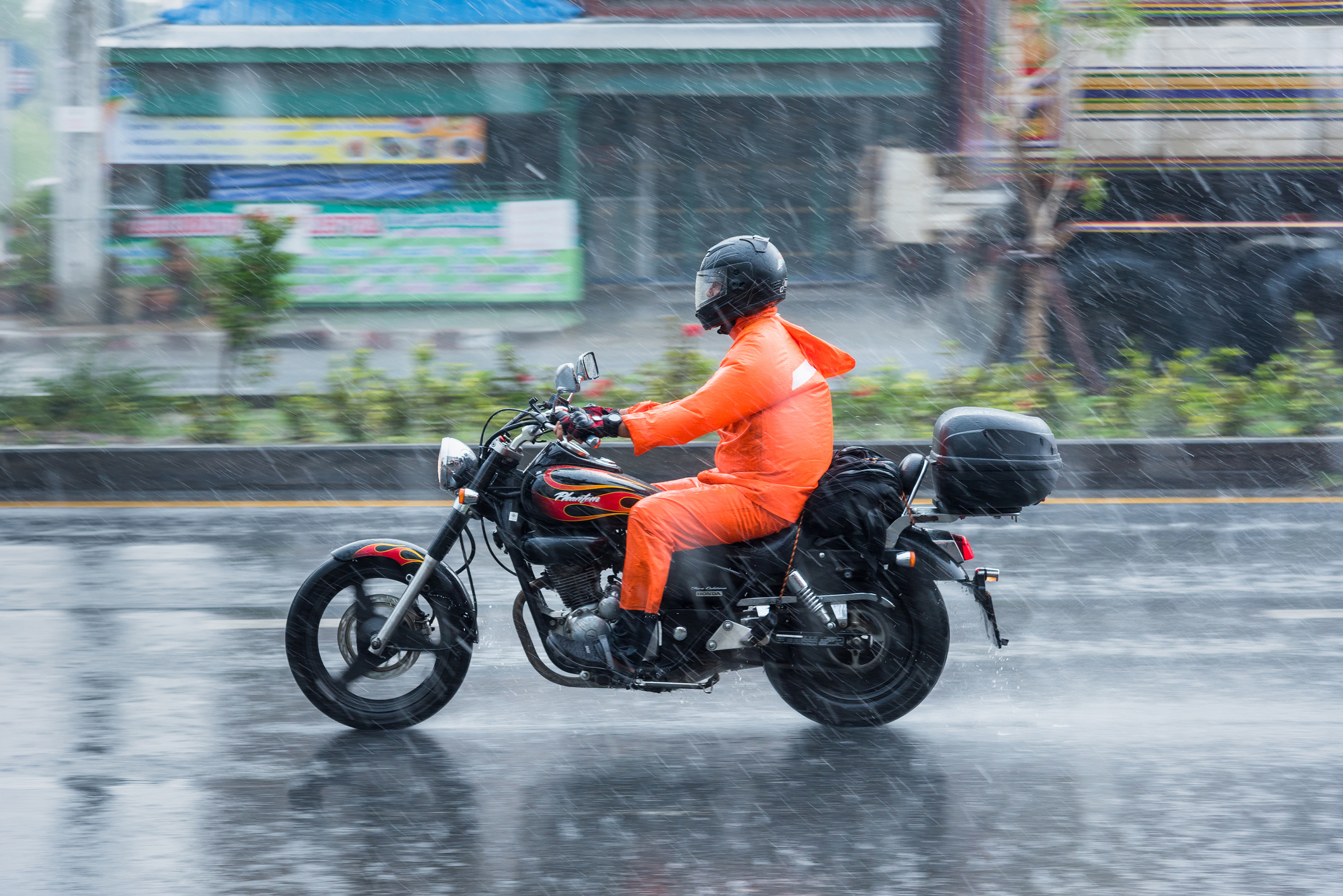Motorcycling in the rain. What should you pay attention to?
Motorcycling in the rain works fine and also safely if you pay attention to the following things. In any case, your tires still have quite a lot of grip on a wet road, even up to 70% compared to a dry one.
1. Beware of vowels
Maybe this is an open door, but clinkers and also cobblestones are slippery as hell when they get wet. You probably know the slides of cycling classics on the infamous cobblestones in Belgium. So slow down on braking and also in corners.
2. Manhole covers and road markings.
Asphalt offers quite a bit of grip in the rain, but metal manhole covers, streetcar rails and connecting strips of bridges and overpasses do not do so at all. If you go over such a lid in a turn, you will feel your bike take a step sideways. Don’t be alarmed, because on the asphalt the tire picks up again. In any case, don’t squeeze the brakes, because you are bound to smash.

3. Safely through the puddle
From a car, you probably know aquaplaning. If the tires have a little less tread and you drive through a big puddle, you feel in the steering wheel that they are losing grip. The water pushes the rubber off the road surface. With front-wheel drive, you then see the engine speed increase as the car reduces speed. On a motorcycle, you have less aquaplaning. The motorcycle tire has a smaller contact area with the road. The pressure per square centimeter is higher than a car tire. The rounded tire surface also allows water to drain more easily than a car tire. For safety and your own safety, do moderate your speed as you approach a puddle.
 4. Braking in the rain
4. Braking in the rain
Old motorcycles often do not have abs. On a wet road surface, it is then to be careful. If you brake, for example out of fright, too quickly, you will crash just like that. Especially the rear wheel can lock up quickly because it presses less on the road surface during braking. Therefore, abs in rain is really strong safety enhancement. The wheels do not lock, and a spinning wheel just keeps grip. The latest engines have an abs system that also adjusts braking action when cornering. Just then you don’t want the wheels to lock. Tip! Brake hard in the rain when driving straight. You’ll be surprised how fast you can still brake before the abs kick in.

5. Keep your distance
Either way, your braking distance on wet roads is longer than on dry roads. So moderate your speed and keep more distance from your car in front. Then, in addition, you are less in the water spray. Also, make sure you can see as far as possible past ahead to see if further ahead you are already braking. So that you can anticipate that.
6. Being seen in the rain
Safe motorcycling in the rain is also done by making yourself as visible as possible. Indeed, motorists also have less visibility because, for example, side windows may be fogged up. Motorcycle clothing with reflection and a yellow motorcycle jacket then really do help make you more visible to other road users. And of course you drive with lights, day and night!

7. Oil and rain: not a good combo
On a dry road you can see an oil trail, on a wet road almost not. Sometimes you see oil droplets flowing out into the wetness in a kind of rainbow-colored fan. Calm down then. And if you smell the pungent odor of diesel fuel, be extra careful. Diesel oil makes a wet road surface slippery.
8. Motorcycle visor in the rain
Raindrops on your visor limit visibility, especially when it’s dark and car lights shine in. Then when your visor fogs up, visibility is done. A so-called Pinlock visor with two layers counteracts that fogging. So at least then you won’t be bothered by that. If necessary, treat the outside of your visor with a car wax or dishwashing liquid. Then the driving wind “runs” the drops off the visor very quickly.

